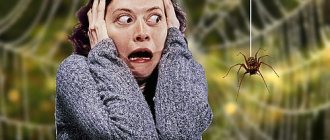Panic personality disorder (BPD) in psychiatry is also called episodic paroxysmal anxiety (anxiety). This is a common disease that occurs in all age groups. The main manifestation is panic attacks (PA), which appear with varying frequency and intensity.
People of different ages come to the Moscow clinic “Leto” with this problem. They experience excruciating panic attacks that significantly impair their quality of life. Therefore, assistance should be provided the sooner, the better.
Before the revision of the ICD-10 classification, BPD was classified in the group of cardioneuroses, VSD (vegetative-vascular dystonia) with crises, and NCD (neurocirculatory dystonia). Now it is separated into a separate nosological unit.
Causes
In cases where psychiatrists at our clinic identify mental disorders accompanied by fears and anxiety, they try to find the main factor provoking the condition. Then the task of relieving the client of his illness becomes much simpler.
Most often, the development of the process is provoked by:
- The presence of similar suffering in relatives (heredity factor).
- Childhood and adolescent psychotrauma.
- Increased level of sensitivity and conflict in the individual.
- Features (accentuations) of the patient’s character and temperament. High background anxiety, suspiciousness, excessive impressionability, vulnerability, frequent impulsive reactions, shyness.
- Staying under stress for a long time.
- Falling under the influence of super-strong emotions, both negative and positive.
- Diagnosis of a serious illness.
- Physical limitations due to disability.
- Hormonal disorders (diabetes mellitus, thyroid pathologies, etc.)
- Neuroses and phobias.
Panic states are frequent companions of people with an unbalanced diet, suffering from chronic fatigue, lack of sleep and use of psychoactive substances.
Signs and symptoms
During the examination of patients, doctors at the Leto mental health center identify multiple complaints characteristic of paroxysmal anxiety. Symptoms are replete with variety.
Almost constantly, suffering people experience:
- Obsessive anxiety for no reason.
- Lack of ability to relax and get rid of anxious thoughts.
- Poor sleep with difficulty falling asleep, frequent awakenings, lack of feeling of rest.
- Psychophysical inhibition.
- Emotional swings with poor self-control.
- Falling into detachment, accompanied by negative thoughts.
Mental symptoms are supplemented by autonomic disorders:
- Uncomfortable feeling of a lump in the throat and squeezing in the chest area.
- Cardiac arrhythmias - increased heart rate, less often slower.
- Excessive sweating, alternating chills and fever.
- Constant weakness with desire to lie down.
- Dizziness, accompanied by nausea at rest and during exercise.
Psychopathology reaches its greatest severity and severity during a panic attack.
The attack is accompanied by:
- Peak of emotional stress.
- Strong uncontrollable fear, both pointless and related to a specific problem: fear of death, the occurrence of some extremely negative event, for example, a plane crash.
- Suicidal thoughts and even actions.
- Trembling throughout the body, heavy sweating, severe tachycardia, loss of orientation and even loss of consciousness.
Panic can begin both during the daytime and during sleep. The average duration of PA is within 10 minutes. In some cases, attacks last from 1 to 2 minutes to half an hour. It is not uncommon to experience a series of phobic episodes. After the first paroxysm of fear with a short period of calm, the second, third, etc. occur. Acute manifestations of BPD can occur: daily, once every 2-3 days, weekly.
During the paroxysmal period, the patient tends to isolate himself, may not go outside, and stop visiting his place of study and work.
The level of desocialization in this case is set in time
The purpose of examining the patient using special techniques.
The largest number of people suffering from episodic parkosysmal anxiety are young. In children and adults, the problem is less common. Panic attacks are predominantly characteristic of women (about 2-3 times more often). This pathology is detected in 1.7% of the population. The disease has a wavy course. In some people it goes away on its own, in others the process progresses and requires ongoing treatment.
Symptoms
The symptoms of a panic attack reach maximum intensity within 5-10 minutes, after which they disappear just as quickly. The entire panic attack can last up to half an hour and goes away on its own, without posing a threat to a person’s life. Some patients experience these conditions regularly (daily or weekly).
Panic attacks cause anxious reactions for no apparent reason. The disease can overtake a person in ordinary situations that do not predispose to the development of anxiety, sometimes this happens in a dream. However, panic disorder does not pose a health risk: no complications are observed, insanity or loss of control over oneself.
However, the frightening fact remains that patients do not know the cause of their condition. After all, attacks often appear out of nowhere, for no apparent reason. But there is a theory accepted in cognitive behavioral therapy that explains the root cause of these attacks. Panic is caused by sudden bodily discomfort or unusual bodily sensations. Following this, a person asks himself a question like “What is happening to me?”, and he himself finds a terrible explanation for his question. As a rule, panic is perceived by him as a heart attack, madness, bronchial asthma. If a person is prone to panic attacks, it is important to keep reminding yourself of a few things:
- a panic attack definitely passes, it does not last long;
- people don't die during a panic attack;
- physical symptoms are not signs of serious illness, but are the result of a response from the sympathetic nervous system.
So, the symptoms of panic disorder are:
- sudden strong heartbeat;
- labored breathing;
- chest pain;
- nausea;
- dizziness;
- shaking, fever, or chills;
- fear of going crazy.
Diagnostics
Contacting our Leto clinic begins with a medical consultation. You can sign up for it by calling the hotline. Panic disorder is identified during a conversation and examination.
For this, a psychiatrist:
- Listens to complaints.
- Asks leading questions and clarifies the nature of the existing problems.
- Examines the patient, paying attention to his behavior and reactions.
- Measures blood pressure, conducts a physical examination with a phonendoscope, and establishes neurological status.
- Interviews loved ones if necessary.
After identifying a presumptive diagnosis, the process of confirming and clarifying it continues with a clinical psychologist.
His methods include:
- Testing using the Zang scale. Answers to the questions of this technique allow the specialist to identify the severity of the violation. The method is easy to carry out and the results obtained are reliable.
- Sheehan anxiety test. It makes it possible to establish the dominant symptoms when a panic attack occurs.
- Test version of Cato. The study includes a two-stage test: the first part to identify the disorder, the second to clarify the degree of severity.
The test results are transmitted to the attending physician and, based on the examination and psychological examination data, the healing process that has already begun is prescribed or adjusted.
Before starting therapy, the psychiatrist at our center makes sure that the complaints of the identified disorder are not caused by somatic or other mental illnesses.
Panic reactions can lead to:
- Of cardio-vascular system.
- Chronic pulmonary obstruction.
- Endocrine and metabolic metabolic disorders.
- Epilepsy.
- Bronchial asthma.
- Tumors of the central nervous system.
In this case, paroxysmal anxiety is a secondary problem, and the main therapeutic effect should be directed to the root cause.
Panic attack - fear or mental disorder
In psychiatry, panic disorder refers to episodic attacks of anxiety that reach the level of panic. They arise unpredictably, without connection with a specific situation. And they can be repeated at different intervals: after several days or months. It is impossible to predict when the next attack will occur.
Scientifically, panic attacks are called episodic paroxysmal anxiety. According to statistics, they are diagnosed in 5% of the world's population. Symptoms often appear in young people - from 20 to 30 years old. Panic attacks occur more often in women than in men.
“The peculiarity of a panic attack is that it occurs without connection with a threat to a person’s life or health,” comments psychotherapist Irina Lopatchenko. “This is how it differs from panic, which is one of the forms of crowd behavior when people are overwhelmed by a wave of fear or horror. And after this, people may not remember the events they experienced and may not realize what they did. With panic disorder, the next attack occurs spontaneously, without external causes, and between episodes there are calm periods without anxiety.”
pixabay.com/
As a rule, people who encounter this problem are in no hurry to consult a doctor. Or they turn to, but not to the specialists they need. The fact is that the signs of a panic attack are difficult to correctly interpret on your own.
A person realizes that something is wrong with him, but if he suspects a disorder at the mental level, he most often tries to suppress it. In Russia, it is not customary to consult a psychiatrist “just in case” or without a significant reason. It is believed that others will misunderstand, loved ones will take him for “crazy”, and his reputation will be seriously damaged. But attempts to ignore the problem only make it worse.
If attacks are repeated, occur more often, a person begins to be afraid, worry or tensely wait for their next manifestation: he avoids places where he was attacked, tries to have less contact with other people, so as not to get into an unpleasant situation. As a result, the circle of contacts is sharply limited, the person withdraws into himself, changes his lifestyle, and moves away from family, friends and colleagues. This can lead to even greater psychological problems when panic attacks give way to depression. Or, against their background, a generalized anxiety disorder develops, when the feeling of anxiety does not disappear at all.
Cost of services
| CONSULTATIONS OF SPECIALISTS | |
| Initial consultation with a psychiatrist (60 min.) | 3,500 rub. |
| Repeated consultation | 2,500 rub. |
| Consultation with a psychiatrist-narcologist (60 min.) | 3,500 rub. |
| Consultation with a psychologist | 2,500 rub. |
| Consultation with Gromova E.V. (50 minutes) | 12,000 rub. |
| PSYCHOTHERAPY | |
| Psychotherapy (session) | 6,500 rub. |
| Psychotherapy (5 sessions) | 25,000 rub. |
| Psychotherapy (10 sessions) | 48,000 rub. |
| Group psychotherapy (3-7 people) | 3,500 rub. |
| Hypnosis (1 session) | 10,000 rub. |
| Hypnotherapy course (5 sessions) | 45,000 rub. |
| Psychotherapy session with E.V. Gromova (50 minutes) | 12,000 rub. |
| TREATMENT IN A HOSPITAL | |
| Ward for 4 persons | 8,500 rub./day |
| Ward for 3 persons | 9,500 rub./day |
| Ward for 2 persons | 11,500 rub./day |
| Ward for 2 persons Comfort | 12,500 rub./day |
| Ward 1 bed VIP | 16,500 rub./day |
This list does not contain all prices for services provided by our clinic. The full price list can be found on the “Prices” , or by calling: 8(969)060-93-93. Initial consultation is FREE!









